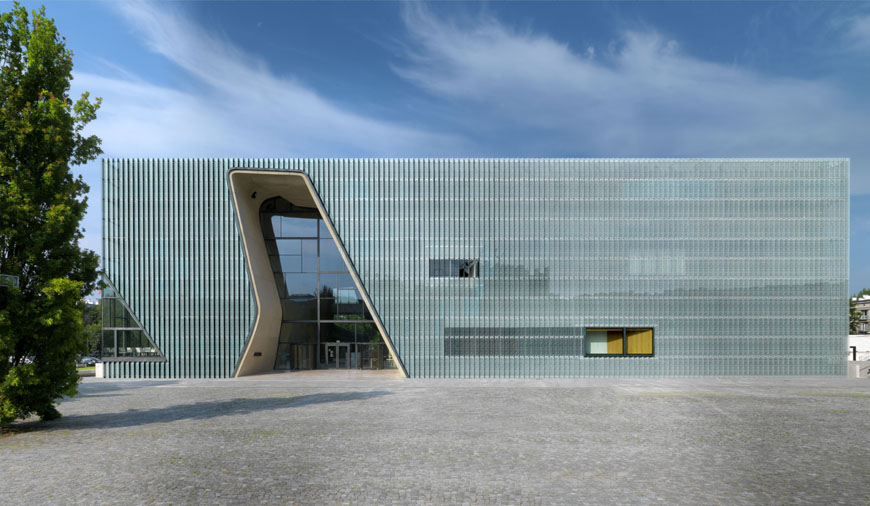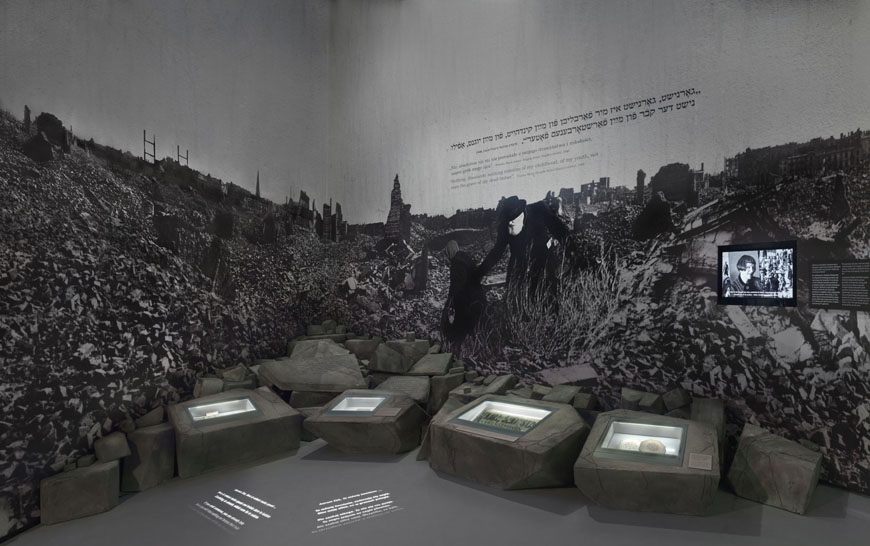The Polin Museum in Warsaw -1000 years of Jewish History
Client: City of Warsaw and Ministry of Culture, Poland
Exhibition design: Event Communication, UK; Nizio Design International, Poland
For image credits, see captions
Photo Wojciech Krynski
Warsaw | One thousand years of Jewish history | The POLIN Museum
Polin is a word with a complex significance. An old legend says that once, those Jews who were escaping from persecution in Western Europe reached a forest where they heard someone saying Polin (Poland in Hebrew); but the same word has the same sound as Po-lin, meaning “rest here” in Hebrew and so decided to settle in the place. This legendary narration establishes also the roots of the Jewish communities in Poland, a one-thousand-year-long history that has in Warsaw its most symbolic key point, possibly.
In 2005 it was decided to build a museum dedicated to the history of the Polish Jews, where once the Warsaw Jews neighborhood (later the Warsaw Ghetto) was. After a competition to which some of the most prominent figures of contemporary architecture participated, the design by Finnish architect Rainer Mahlamäki was selected as the best proposal. The building was completed in 2013, housing temporary exhibitions, workshops, conferences, and special events but still missing the core exhibition, which was eventually inaugurated on 28 October 2014.
Top and bottom: photos Wojciech Krynski
The 12,800 sqm building designed by Mahlamäki appears quite regular in its exterior shape: an almost perfect box, facing the Ghetto Heroes memorial in central Warsaw. Approaching the building more closely, subtle details reveal that this “perfection” is rather apparent; like the long cut in the facade opposite the memorial, symbolizing the fracture produced by the Holocaust in the history of Polish Jews, or the texture, constituted by the word Polin repeated infinite times, that runs on the silk-printed glass envelope as well as on the perforated copper sun-screen panels.
The museum interiors are even more surprising; entering the building, the visitors find a huge concrete cavern, introducing the functional spaces and the exhibition galleries.
Top and bottom: photos Wojciech Krynski
One-third of the building surface is dedicated to the core exhibition, which presents the long history of Polish Jews through eight thematic and chronological sections; from First Encounters, on the arrival of Jews in Poland during the 10th century, up to present-day events, over 1000 years of history are narrated. The exhibition is composed of objects, documents, artworks, models, videos, and interactive installations. Among the most impressive exhibits, the full-scale reconstruction of the lost 17th-century wooden synagogue of Gwoździec is particularly worth to be underlined.
Top: “First Encounters” gallery; photo Darek Golik
Middle: “Paradisus Iudaeorum” gallery; photo Magdalena Starowieyska; Darek Golik
Bottom: “Gwoździec Re!construction”; photo Magdalena Starowieyska
The section dedicated to the German occupation period is truly heartbreaking; presenting the tragedy of the Nazi persecutions, the Jews uprising, and the Holocaust, the gallery is positioned exactly opposite the Monument to the Ghetto Heroes, located just outside the museum.
top: “Holocaust” gallery; photo Darek Golik; middle and bottom “Postwar years” gallery; photos Magdalena Starowieyska; Darek Golik.
Photos courtesy of Polin Museum
copyright Inexhibit 2024 - ISSN: 2283-5474













